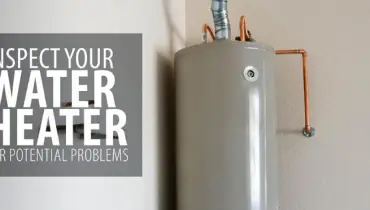
Regular water heater inspections are essential for home safety and efficiency. Rainbow Restoration highlights key steps to identify potential issues:
|
For most people, there’s nothing better than a nice hot shower or a warm relaxing bath at the end of a busy day. This luxury comes courtesy of your water heater, and unless there’s something wrong with it, chances are you probably don’t give much thought to it. However, if you’d prefer not to step out of bed one morning to a puddle of water and have to use a flotation device to navigate through your home, a little attention may be in order.
It’s important to inspect and maintain your water heater to prevent water damage from water heater leaks.
Find it.
- Your water heater will typically be located along an exterior wall, near gas and water supply lines, in a closet, in the basement, or your garage.
Take a gander.
- Check the tank for signs of rust or leakage. Common locations for leaks include:
- At the floor level, under the water heater
- Under and around the relief valve
- At the piping to and from the water heater
Give it a detox.
- Regularly flushing out your water tank once or twice a year, or every few years at a minimum keeps it in optimum condition. Flushing out filth removes build-up and improves efficiency. Be sure to turn off both water and power to your water heater before attempting a flush. Seek the help of a professional for this task to ensure it’s done right.
Take the pressure off.
- Open and test the pressure relief valve (looks like a little lever). Be sure to follow the manufacturer’s instructions. Opening it will allow water to flow out. It can be a dangerous little item, so if it needs to be replaced, call a professional to do the work.
Make sure it’s not a rust bucket.
- The anode rod in your water heater protects it against rust and corrosion that can result in premature failure. It can last a few years to the life of your water heater, depending on the composition of your water. Check it about every three years. If it's less than a half-inch thick or coated with calcium, it should be changed.
Got gas?
- Gas heaters can be identified by a small flame, known as the pilot light, near the bottom of the heater. Gas water heaters may require additional inspection and cleaning of the burner and the ports for safe operation.
Keep your water heater – and yourself – breathing easy.
- If your water heater has a top vent and it’s not electric or high-efficiency, check the water heater vent to prevent the release of deadly carbon monoxide (CO) into your home. Call in the professionals to check out your water heater for CO leakage.
Do not pass go.
- Before turning the power to the water heater back on, be certain to close the pressure relief valve and refill the tank.
Has your water heater left you up a creek? Having your water heater inspected by an expert can help prevent a serious situation from happening. Rainbow Restoration® can help with tips to prevent water damage to your home and offers professional cleanup services for when life leaves you navigating the rapids. Contact us for your free water damage mitigation estimate today.
